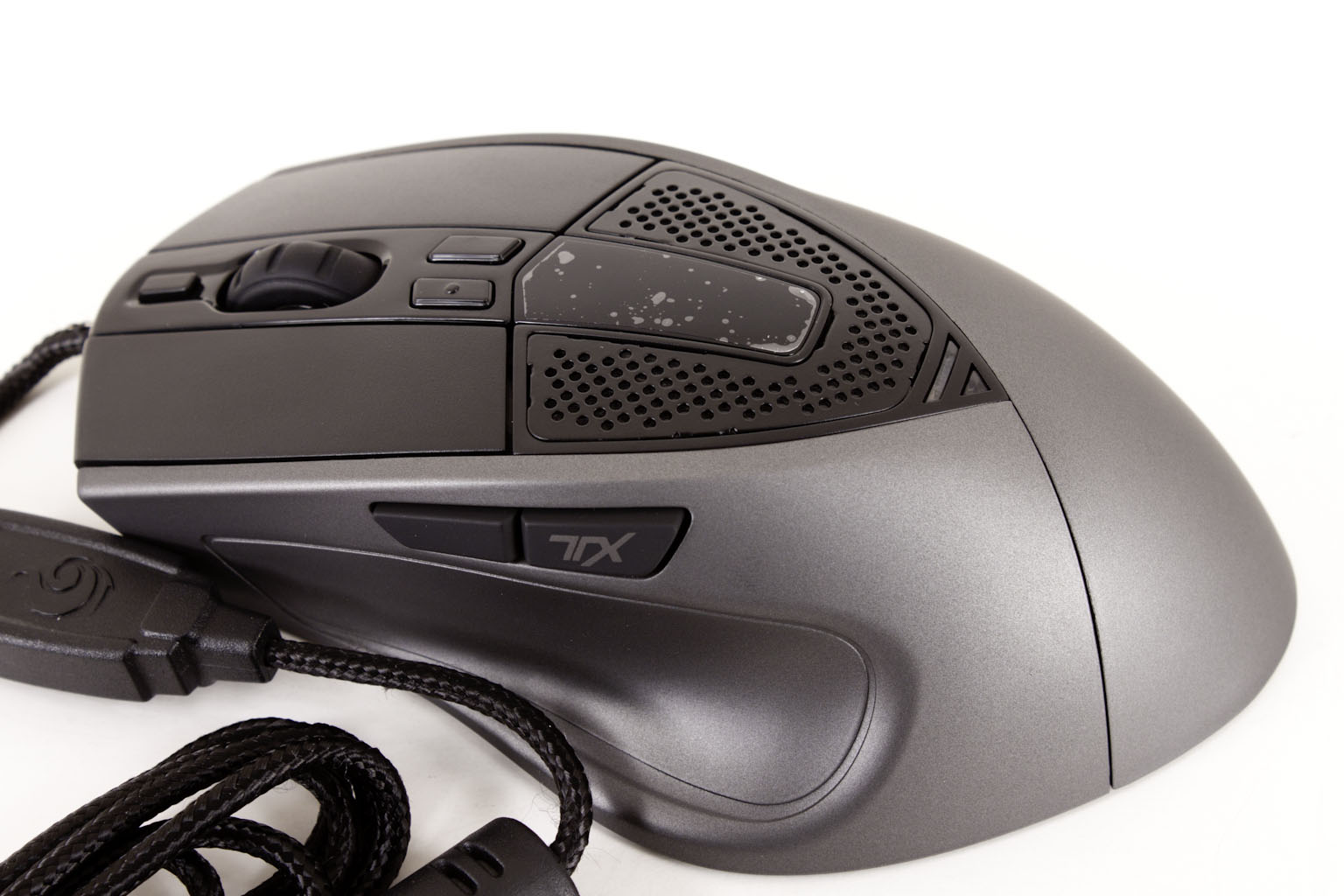Performance -
To test the performance of the Sentinel Advance II and the Speed-RX L I stacked it up against my G5 laser gaming mouse the original Sentinel and my Spawn. I played through several levels of Batman Arkham Asylum, Modern Warfare 3, and Call of Duty Black Ops and Mass Effect 3. I played each of these for one hour using each mouse to gauge hand and wrist fatigue and also accuracy and ease of use. I then sat down for some detailed Photoshop CS5 editing. These tests would be using the eraser tool and the cloning tool to edit and clean up small details in images. Unfortunately as these tests are all subjective I can only offer you my experience with it at this time.
Gaming -
As with my first encounter with the original Sentinel Advance I found that using the upper end of the DPI settings did not always work for my style of gaming. The mouse was almost too responsive, I had to back things off until I got used to how responsive the Advance II is. After about an hour of gaming with each one I was able to push the DPI up to 7200, but no higher. Still this thing is great to use and you can really get some pin point accuracy even with snap shots in Black Ops and Modern Warfare 3. With the Speed RX under my hand I was not concerned with running off the mat or needing to reposition. The combination of the two gave a very smooth feel to things and even improved the feel of a couple of my older mice like the G5 and the original Sentinel. Another item that was nice to put into use was the macros; we did manage to get one working for Arkham Asylum which allowed for some impressive combinations and a quick dodge function for rolling out of the way of the titan infected henchmen.
Photoshop Editing -
Again the precision works before and against you. We did find a happy middle ground though. We slowed down the responsiveness of the mouse while leaving the DPI at 8200. This allowed for pinpoint and controlled movements, but did not run away on you. Oddly enough this same combination did not work in gaming. It is great that the Advance II has the multiple profiles available to accommodate this and with them stored inside the Advance’s 128KB of memory I can easily swap this back and forth between the gaming system and the one we now use for photo and video editing.
Entusiast Peripherals
CM Storm's Sentinel Advance II Takes A Few Shots in Our Lab - Performance
- Details
- By Sean Kalinich
- Hits: 19916
 As you might have noticed we are getting back into our coverage of not only the core components to computers, but also the peripherals that make the computing experience what it is. One of the most used (and often overlooked) components is the mouse. We have covered a few of these handy little items in the past; some good, some bad. One of our favorite manufacturers has been Cooler Master and their CM Storm line. When we first heard about this line we were a little skeptical; we have seen where other manufacturers have branched off and ended up with not much more than gaudy versions of what they already sell. However, with Cooler Master and the CM Storm line we have seen quite a bit more. Ever since we first tested out the Sentinel Advance we knew that Cooler Master was not playing around here and as you have been able to see with their recent releases of the QuickFire Rapid and Pro mechanical gaming keyboard the CM Storm line is here to stay. So with that in mind we are going to take a look at the highly anticipated Sequel to the mouse that started it all off for CM Storm, the Sentinel Advance II along with the CM Storm Speed-RX L Mousing Surface.
As you might have noticed we are getting back into our coverage of not only the core components to computers, but also the peripherals that make the computing experience what it is. One of the most used (and often overlooked) components is the mouse. We have covered a few of these handy little items in the past; some good, some bad. One of our favorite manufacturers has been Cooler Master and their CM Storm line. When we first heard about this line we were a little skeptical; we have seen where other manufacturers have branched off and ended up with not much more than gaudy versions of what they already sell. However, with Cooler Master and the CM Storm line we have seen quite a bit more. Ever since we first tested out the Sentinel Advance we knew that Cooler Master was not playing around here and as you have been able to see with their recent releases of the QuickFire Rapid and Pro mechanical gaming keyboard the CM Storm line is here to stay. So with that in mind we are going to take a look at the highly anticipated Sequel to the mouse that started it all off for CM Storm, the Sentinel Advance II along with the CM Storm Speed-RX L Mousing Surface.



